Volumetric elastic is a popular knitting technique because it allows you to make beautiful and stylish products. The technique is characterized by simple patterns that allow you to create not only wardrobe items, but also various decorations for clothes.
Necessary tools and materials
When choosing thread material, you need to take into account the purpose of the clothing or decoration. For example, when creating an elastic band for a scarf or hat, you should give preference to yarn that has good thermal insulation.
When decorating accessories or jewelry that have an elastic function, bright or decorative threads are ideal.
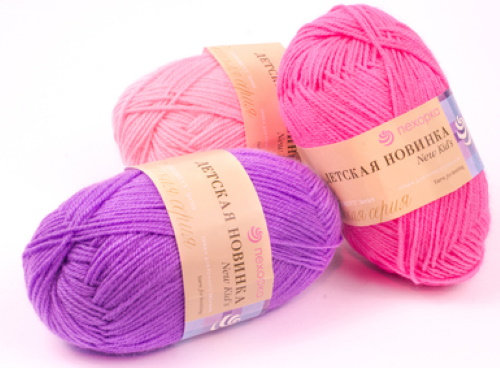 |  |
 |  |
Tips for choosing yarn:
- acrylic threads, having good elasticity (for these purposes it is acceptable to use a material that contains elastane);
- tape threads suitable for adding texture and volume;
- cotton material, which will give the detail softness and lightness;
- woolen or semi-wool thread material, which contains natural fibers.
To create a snood, scarf and sweater, it is recommended to take knitting needles of size 4.5 mm. For making socks, a 2.5 mm tool is suitable. The needles should not be heavy, and the surface should be polished.
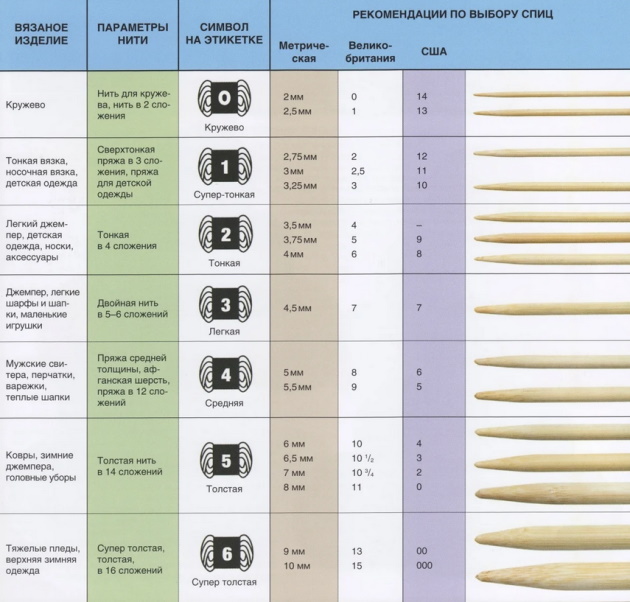
Poorly processed and rough knitting needles are not suitable for work, because such tools are not able to provide the necessary glide. At the same time, due to the presence of small nicks, the thread fibers can split. However, knitting needles can have different degrees of glide.
When choosing a multi-textured or woolen material, a tool with a smooth surface is suitable. If the threads are slippery, it is best to use knitting needles with a slightly rough surface.
Selecting knitting needles depending on the material:
| Material | Peculiarities |
| Aluminum | Despite their availability and lightness, aluminum tools used to leave stains on light threads. But today, the manufacturing technology has changed, eliminating the drawback. Modern knitting needles are light and convenient. |
| Anodized metal | Light alloys are used for manufacturing, which are protected from rust by a film color coating. Basically, such a tool is suitable for working with dark threads. |
| High strength steel | Suitable for making any fabrics from different thread materials, therefore considered a universal tool. Knitting needles without coating or with nickel coating are available for sale. |
| Wood or bamboo | They are considered an expensive material. However, the knitting needles will be light, pleasant to the touch and comfortable if they are thick. A thin wooden or bamboo tool does not have high strength, so it will have a short service life. |
| Bones | Rarely found on sale, because they are considered antiques. Mostly sold are imitation of natural bone, for the production of which hardened casein protein was used. |
| Plastic | This type of material is often used to create thick knitting needles. The tool is suitable for free knitting. Plastic is a flexible material, so it is not suitable for making knitting needles of small diameter. |
Schemes with description of works for beginners
The voluminous elastic band is suitable for decorating warm items such as scarves, hats, sweaters and socks.
For ease of work, it is recommended to use patterns with detailed instructions for knitting things on knitting needles. Thanks to this, it is possible not to get confused in the design of loops.
For the hat
A voluminous elastic band knitted with knitting needles (the knitting pattern is simple and clear, therefore suitable for beginners) looks great on a hat. The created product will fit tightly to the face without causing discomfort.
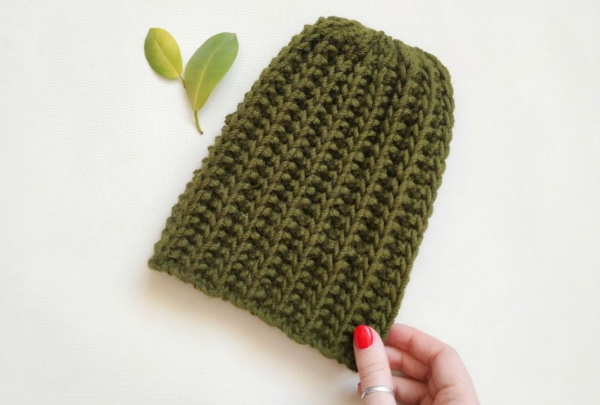
Step-by-step execution of work:
- Make a set of fragments, the total sum of which will be divisible by 6. Make 2 additional loops.
- The preparatory line should be created from the inside. For this purpose, make an edge loop and repeat the pattern of the front, 4 back and front fragments one by one until the end of the line. At the end of the row, make an edge loop again.
- The following rows are done from the front side of the fabric.
- In the 1st row, the outer loops should be edge loops. Between them, create alternately a purl and a front loop in the next loop (includes a front loop, a throw-on and again a front loop) twice, a front loop and again a back loop fragment.
- At the beginning of the 2nd row, create an edge element. Next, knit *front and back parts. Then remove 6 elements, leaving the material in front of the product. Create back and front fragments* (repeat until the end of the row). The edge element should be the outermost one.
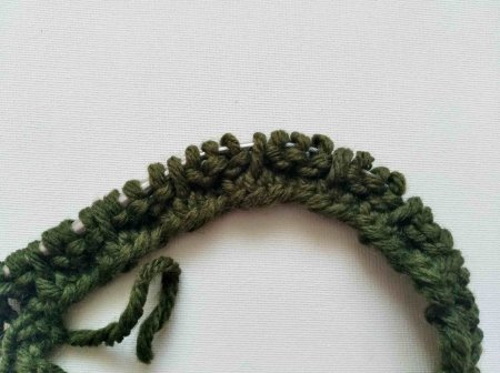

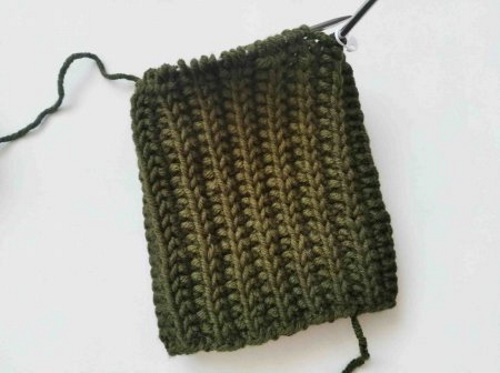
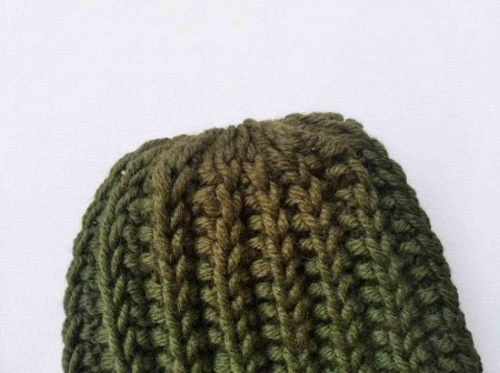
- At the beginning and end of 3 lines, perform 1 edge fragment. Then design *purl detail and cross 1/3 to the right. To do this, remove 1 detail behind the canvas, design 3 front ones together from the back wall with the left tool and create a front loop with an auxiliary needle.
- Next, make a 3/1 cross to the left side. For this purpose, remove 3 fragments in front of the product, the front loop from the left tool and together 3 front parts from the auxiliary needle behind the back wall. Then make a purl loop* (alternate repeat until the end of the line).
- Row 4 includes *front, 4 back and front fragments* (repeat until the end of the line). The outer loops at the beginning and end of the line should be edge loops.
- To create a pattern, repeat rows 1 through 4.
For a scarf in a circle
Volumetric elastic knitting (the knitting pattern will allow you to create a beautiful thing) can be used for circular knitting of a scarf. According to this pattern, the size of the product will reach 25x200 cm.

The pattern contains "*…*". This means that the selected fragment of the pattern needs to be repeated alternately from one edge of the line to the other.
Scheme describing the process:
- Initially, cast on 46 stitches on knitting tools.
- At the beginning and end of each line, make 1 edge fragment.
- In row 1, make a *front loop, throw over and remove the front fragment from the left to the right tool without knitting*.
- In the 2nd row, knit the purl part. Then make a *front loop. Then make the yarn over of the previous row together as a front loop. Make the yarn over again, and transfer the purl part from the left to the right needle without knitting*.
- Row 3 includes a knit stitch, *yarn over, slip next stitch and knit together knit stitch with yarn over*.
- To continue the pattern, alternate 2 and 3 rows.
- At the end of the work, close all elements.
- It is recommended to steam the knitted item.
For a sweater
When making a sweater with a voluminous elastic band, it is necessary to strictly follow the pattern of the loops so that the pattern turns out clear and neat.
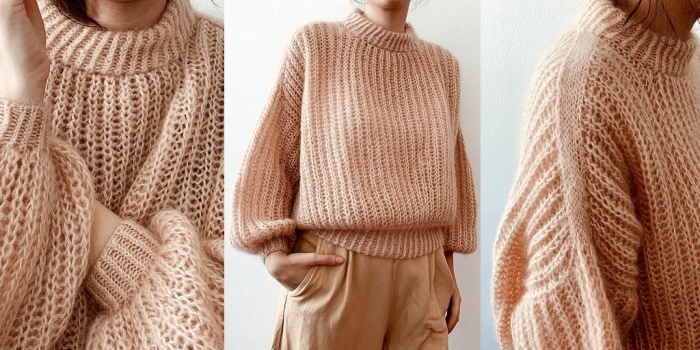
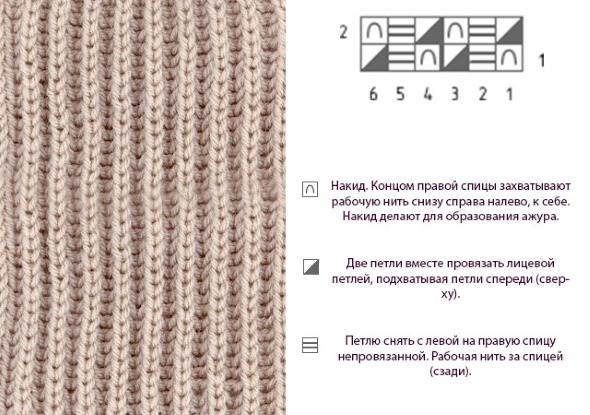
Knitting algorithm:
- Initially, cast on stitches, the sum of which will be odd. Additionally, make 1 edge fragment on each side.
- In row 1, alternately and until the end of the row, create on the front and back parts.
- The 2nd row includes the front and the removed with yarn over fragment without knitting. The indicated loops are alternated from one edge of the row to the other.
- In all the following rows, before the fragment that was the front one in the previous row, make a yarn over. Then remove this loop without knitting.
- Then pass the new piece, together with the throw that hangs on it, behind the front wall of the front one.
- The knitting process should continue until the desired size of the elastic band is created.
For socks
Volumetric elastic with knitting needles (the knitting pattern does not include complex elements and does not require the use of other tools) is suitable for making short socks. For these purposes, it is recommended to use yarn of 2 shades. Gray and blue tones are suitable for this.
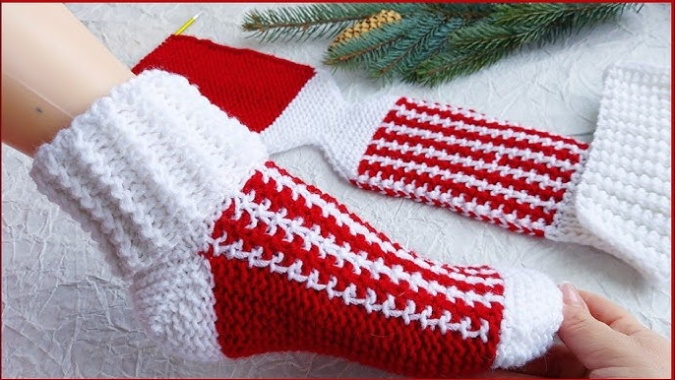

The presence of “*…*” in the pattern means that the selected fragment of the ornament must be repeated alternately until the end of the row.
Step-by-step description of knitting:
- First make a 1x1 elastic band. To do this, knit the front and back parts in turn.
- To create a voluminous elastic band, change the shade every 2 lines. Initially, blue thread material should be used.
- In rows 1 and 2, create 1 front and 1 back fragment. Perform the details in turn.
- Row 3 includes a knit stitch, a yarn over and 1 slipped stitch without knitting.
- In the 4th row create a front loop and a yarn over. Then remove the part with a yarn over without knitting.
- Row 5 includes the purl piece and a section with 2 yarn overs, knitted with the front stitch.
- Row 6 includes the purl and front fragments. Knit these loops alternately.
- To continue creating the voluminous elastic band, repeat rows 3 through 6.
For a snood
A voluminous elastic band with knitting needles (the knitting pattern will tell you how to correctly create loops) allows you to make a snood, which often requires working in a circle. It is also permissible to design the product using the usual technique along the canvas. At the end, the thing must be sewn into a ring.
This method is suitable for beginners because it is easy and does not require the creation of a large number of elements, unlike working in a circle from the bottom up.
When creating a snood, the rows can be made turning. As a result, the seam will be present on the back of the fabric. This technique is characterized by a slight alternation of shades, so you will not be able to get confused. At the same time, the seam will not stand out much.
To avoid seams and make the pattern clearer, you need to work on circular knitting tools from the bottom up. To avoid losing the beginning of the line, it is recommended to use a marker.
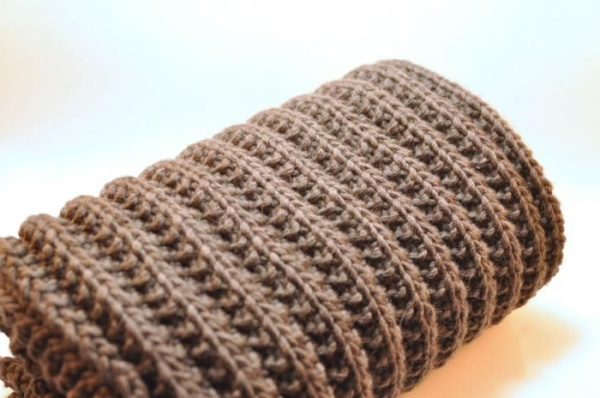
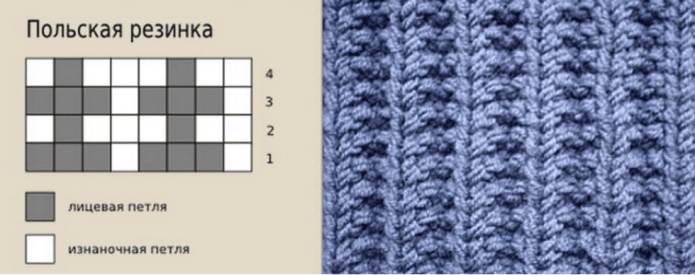

Knitting pattern with description:
- Make a set of an even number of loops that will correspond to the length of the garment. Knit 2 additional parts, one of which is needed to close the loops into a ring.
- In the 1st row, remove the first fragment with a yarn over, then make the front piece.
- In the 2nd row, create a double fragment with purl stitch, remove a single loop with a yarn over.
- In the 3rd row, remove the single purl fragment with a yarn over, and make the double loop as a front loop.
- In the 4th row, make the doubled piece purlwise and remove a single loop with a yarn over.
- Alternate 3 and 4 lines until the end of the fabric.
- When the optimal height of the product is reached, close the loops. To do this, in the outer line, you can switch to a 1x1 elastic band. It is also acceptable to design 2 fragments together with a throw, throwing the created part onto the left tool.
Secrets for Beginners
Secrets for Beginners:
- To obtain a neat, beautiful and voluminous ornament, all elements must be knitted for one half of the fabric - for the back or front wall. If you do not follow this rule, the product may lose its softness and appearance.
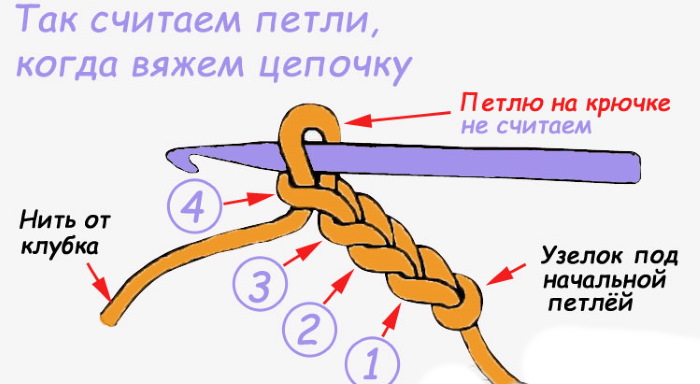
When alternating loops through one, the number of elements can be any. If two loops alternate, their number must be even.
If a group change of 3 loops is required, the total number of elements must be a multiple of 3. However, edge loops are not included in this number. Such elements must be counted separately.
- If you choose a variegated thread material, the elastic will visually have an uneven edge.
- You can interlace the loops to create a special effect. For this purpose, you need to use several shades of thread material. Additionally, when designing the lines, you need to alternate the tones.
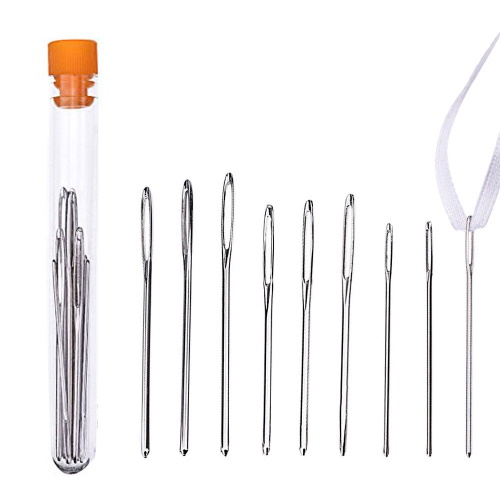
- It is not necessary to take knitting needles that are stated in the instructions for the thread material. For work, it is permissible to use tools of a smaller or larger diameter than required.
In this case, the main thing will be the result, which depends on the choice of thread material. It is advisable to make several samples to understand which needles are best to use to obtain even elements. It is worth combining thick threads with thin tools.
In this case, it will be more difficult to pull out long elements.
- It is not advisable to make a set of elements on two tools together if these needles will be used in the main knitting.
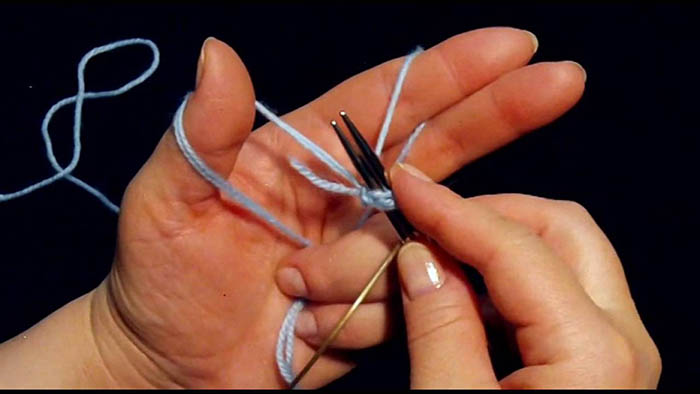
For these purposes, it is worth using one knitting needle, the size of which will be larger than the main one, or 2 small ones, the total size of which will be larger than the main one.
- If you choose a very large tool, the edge may be loose. As a result, the elastic will be unstable and look sloppy.
- When making a voluminous elastic band, it is necessary to control the density and uniformity of the elements. To obtain a more elastic and voluminous detail, the loops should be placed close to each other.
- If desired, it is permissible to combine various ornaments to obtain a more voluminous and interesting elastic band. For example, you can experiment with different structures and textures of thread material.
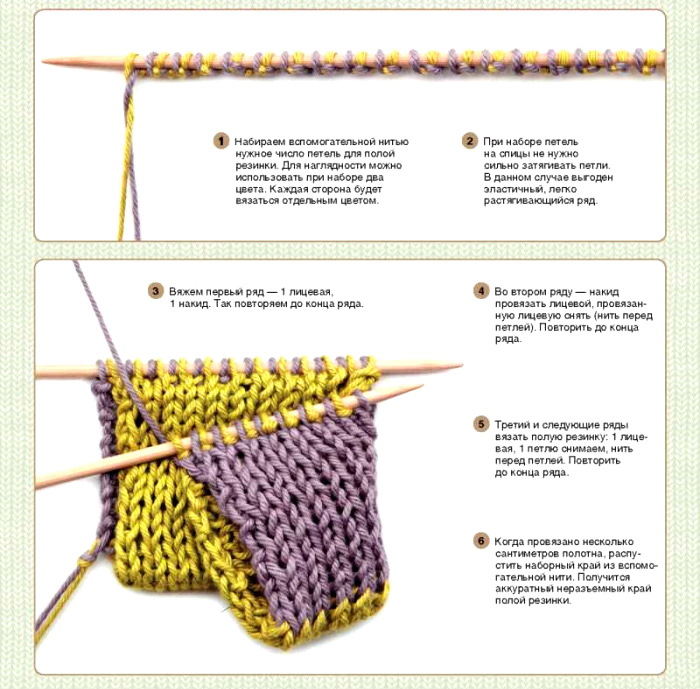
Additionally, you can use decorative elements in the form of appliques or buttons.
- When knitting elements, it is necessary to slightly tighten the thread material. This mainly concerns those who are used to sweeping knitting. In this case, when creating each loop, the right knitting tool must be moved slightly to the right side, and the yarn to the left.
This option corresponds to a dense elastic band if the yarn is thicker and the tool is thin. There is also another option, which involves tightening the element after knitting to the diameter of the knitting needle.
This method is ideal when working with thick tools and thin yarn.
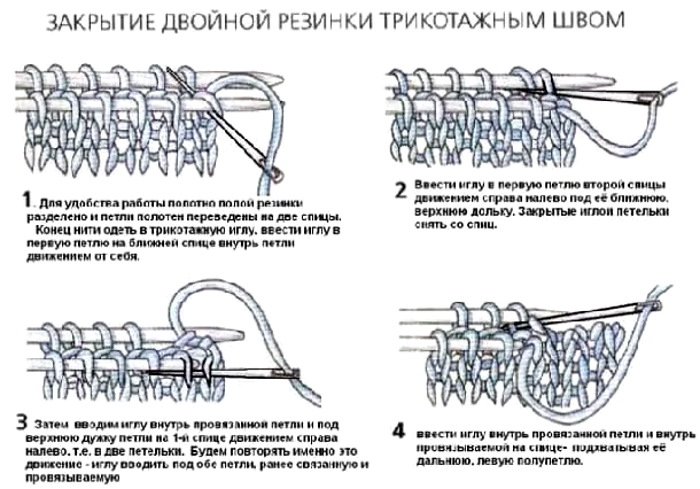
- To create a voluminous elastic band, any knitting method is suitable, in which the loops will expand due to the addition of new elements to the current loop. As a result, the elastic will acquire fluffiness, flexibility, and additional volume.
- To make a voluminous elastic band, it is permissible to use a shirt loop. When knitting elements, it is necessary to make small pads that add volume to the part. This knitting technique is suitable for headwear and hand accessories.
- To create a voluminous elastic, the thread material must be fluffy and have a distinct texture. This helps to create additional volume and an interesting visual effect.
Knitting voluminous elastic bands is considered a creative and exciting activity, because it helps to create fashionable and unique products using knitting needles. At the same time, there are a large number of different patterns, so everyone can choose the best option.
Video about knitting
Volumetric elastic with knitting needles:
